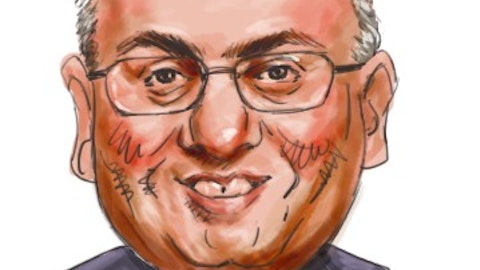Victor Moyo: Well, first off, we are still to have our discussions with the agency. Right now, what we observe in our setting is that we are dosing continuously. And as long as that safety is supported for continuous dosing, our recommended Phase 2 dose will include continuous dosing. And that would be, provide the basis of the discussions that we hold with the agency subsequently. So right now, we are not holding that – we’re not doing the three weeks on, one week on that some of the CDK 4/6 inhibitors have to do. We are dosing continuously.
Ahu Demir: I see. That’s very helpful. Thank you. I’ll keep my RDEB question. I’ll drop in the queue to be mindful of the others. Thank you so much for answering my question.
Victor Moyo: You’re welcome.
Steve Fruchtman: Thank you, Ahu.
Operator: Our next question comes from Joe Pantginis with H.C. Wainwright. Your line is now open.
Unidentified Analyst: Hi, this is Josh on for Joe. Thank you for the update. I had a question about the enrollment and how that’s looking and the number of patients for the Phase 2 study for narazaciclib and that PKI resistant KRAS non-small cell lung cancer?
Steve Fruchtman: Victor?
Victor Moyo: Yes, we, since the last update, we enrolled three more patients in that study. We are looking to have an update in terms of outcomes subsequently once we obtain a report from the investigator.
Unidentified Analyst: Thank you. And for the narazaciclib trial and solid tumors, are you seeing any specific solid tumor indications, like more of a certain kind, or has it been pretty uniform across the solid tumors for the monotherapy trial?
Victor Moyo: We have enrolled a truly diverse set of patients with solid tumors. And so, there isn’t a particular pattern in the monotherapy that I can describe as standing out. Our initial patients tended to be more on the GI, gastrointestinal type of tumors, but there really isn’t anything that stands out as being unique in terms of the patient population we’re seeing.
Unidentified Analyst: All right. Thank you. Thank you again for the update.
Steve Fruchtman: You’re welcome.
Operator: Our next question comes from the line of Robert LeBoyer from Noble Capital Markets. Your line is now open.
Robert LeBoyer: Since you’re going to be doing an additional cohort in the narazaciclib solid tumors, what is your projected start date for Phase 2 at this point?
Steve Fruchtman: So I’ll – give Victor a rest, I’ll take that. So, it’s a great question, Robert. If we see additional DLTs in 2023 at the 280 milligram cohort, we may be done. If not, then we may go into the first quarter to establish the recommended Phase 2 dose. And we can’t meet with the agency until we know the dose of the registration trial because they will want to see the safety of that dose. So we have to go into the first quarter of ’24 to establish the recommended Phase 2 dose and meet with the agency. We estimate that the registration trial would begin in first half of 2024 in low grade endometrial cancer.
Robert LeBoyer: Okay. And if there are no DLTs in the cohort to be added, would you add another second cohort in 2024?
Steve Fruchtman: It’s always hard to predict these things, Robert. It depends on what we see regarding it. As Victor explained, we have a pharmacodynamic marker, a kinase marker. We already see engagement. And as we dose escalate more engagement, we know we’re engaging the kinase involved of stem cell proliferation. We see some mild neutropenia. It really depends. It also depends on the PK. Are we maxing out? As we dose escalate, is PK going up or is it staying at a maximum level so there’s no need to dose escalate? So all those things, as Victor alluded to, go into the decision. Are we done at 280? Meaning do we have DLTs at 280, which means the recommended phase two dose would be 240. Are we seeing enough evidence that 280 is safe with target engagement, with maximum PK to claim that 280 would be the recommended Phase 2 dose? It’s easier to answer that question with data than hypothetically but I answered it to the best of my ability.
Robert LeBoyer: Okay, great. Thank you very much.
Operator: Our next question comes from the line of James Molloy from Alliance Global Partners. Your line is now open.
James Molloy: Hi, good afternoon. Thank you for taking my question. My question is on the rigosertib, getting the orphan designation. I know that we discussed before some of the challenges on that. Can you walk through sort of the steps you have to take to get the rigosertib orphan designation and how the clinical trial plan might look should you get that?




